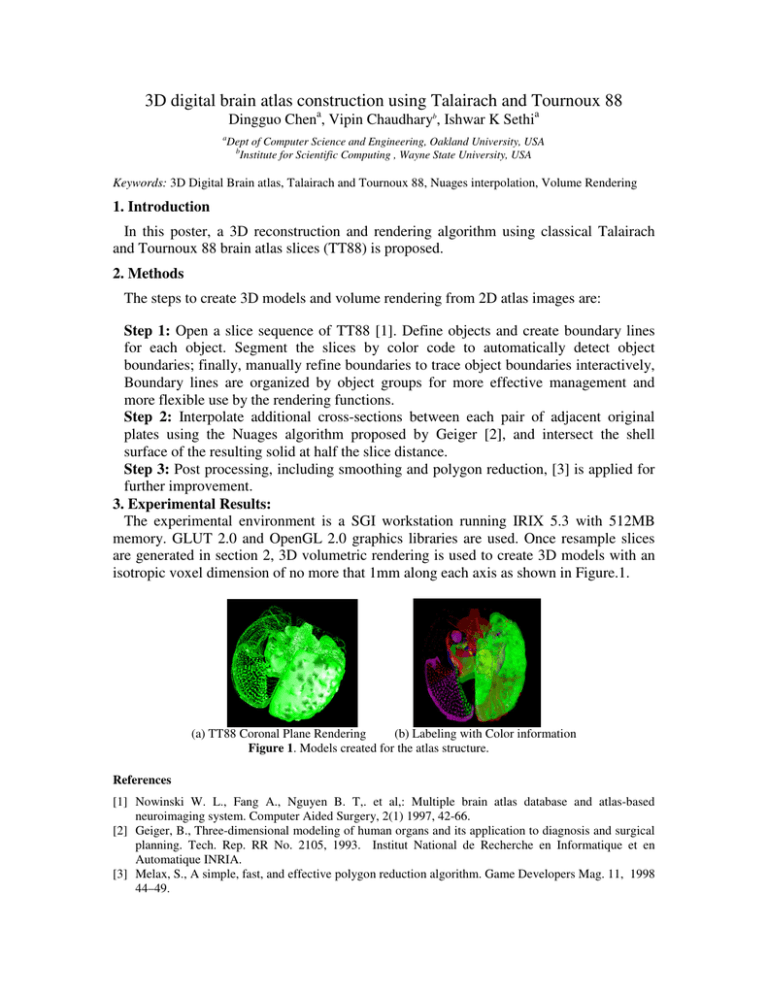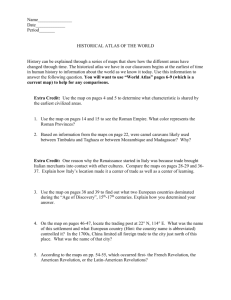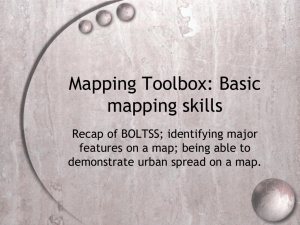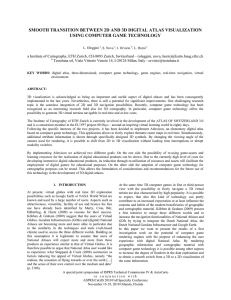3D digital brain atlas construction using Talairach and Tournoux 88
advertisement

3D digital brain atlas construction using Talairach and Tournoux 88 Dingguo Chena, Vipin Chaudharyb, Ishwar K Sethia a Dept of Computer Science and Engineering, Oakland University, USA b Institute for Scientific Computing , Wayne State University, USA Keywords: 3D Digital Brain atlas, Talairach and Tournoux 88, Nuages interpolation, Volume Rendering 1. Introduction In this poster, a 3D reconstruction and rendering algorithm using classical Talairach and Tournoux 88 brain atlas slices (TT88) is proposed. 2. Methods The steps to create 3D models and volume rendering from 2D atlas images are: Step 1: Open a slice sequence of TT88 [1]. Define objects and create boundary lines for each object. Segment the slices by color code to automatically detect object boundaries; finally, manually refine boundaries to trace object boundaries interactively, Boundary lines are organized by object groups for more effective management and more flexible use by the rendering functions. Step 2: Interpolate additional cross-sections between each pair of adjacent original plates using the Nuages algorithm proposed by Geiger [2], and intersect the shell surface of the resulting solid at half the slice distance. Step 3: Post processing, including smoothing and polygon reduction, [3] is applied for further improvement. 3. Experimental Results: The experimental environment is a SGI workstation running IRIX 5.3 with 512MB memory. GLUT 2.0 and OpenGL 2.0 graphics libraries are used. Once resample slices are generated in section 2, 3D volumetric rendering is used to create 3D models with an isotropic voxel dimension of no more that 1mm along each axis as shown in Figure.1. (a) TT88 Coronal Plane Rendering (b) Labeling with Color information Figure 1. Models created for the atlas structure. References [1] Nowinski W. L., Fang A., Nguyen B. T,. et al,: Multiple brain atlas database and atlas-based neuroimaging system. Computer Aided Surgery, 2(1) 1997, 42-66. [2] Geiger, B., Three-dimensional modeling of human organs and its application to diagnosis and surgical planning. Tech. Rep. RR No. 2105, 1993. Institut National de Recherche en Informatique et en Automatique INRIA. [3] Melax, S., A simple, fast, and effective polygon reduction algorithm. Game Developers Mag. 11, 1998 44–49.






